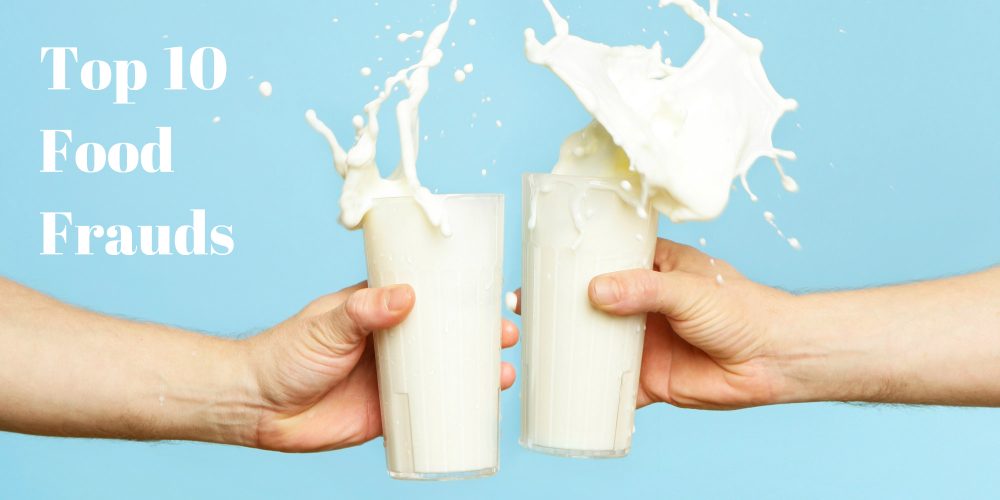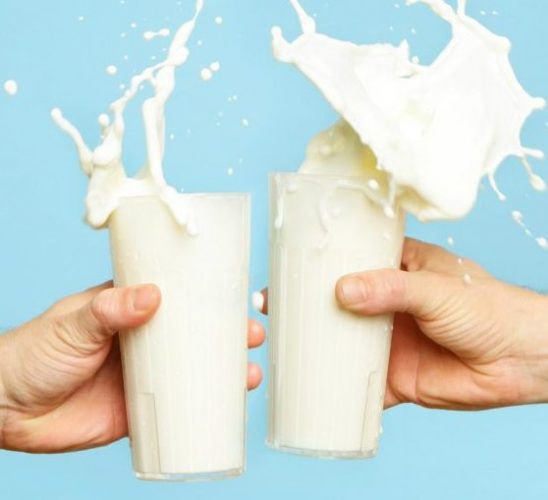
The term “food fraud” can include simple mislabelling (inaccurate country of origin, a modified expiration date or false claims like “organic”), product substitutions (selling a cheaper species of meat or fish as a more expensive one), or counterfeits of brands. Before finally reaching the consumer, the food product often goes through several hands and countries to reach the grocery store. Retailers at times have no guess on it being mislabelled. Women Fitness brings you ten food categories with reported cases of food fraud.
- Olive Oil: Talking of the health benefits of oilve oil the one lying in your pantry, might probably contains less actual olive oil than you’d ever imagine. It is often substituted with a lower-cost type of olive oil or thinned with a nut, seed or legume oil. What you should do: turn the bottle around and read the back label. You’ll see an expiration date (usually two years after an oil was bottled) but what you’re looking for in particular is the harvest date; the further away the two-year date is, the fresher the oil is. To test: Real olive oil – the good stuff – will be powerful and peppery and it will catch in your throat. You may cough, your eyes may water. But these are in fact good indications that what you’re tasting – finally! – is authentic.
- Fish and Seafood: Once fish is filleted and skinned, its species is difficult to determine. Some sellers take advantage of this and substitute a low-valued species for a more expensive one (for example, passing off catfish as grouper). Processors often misrepresent the weight of a seafood product through practices such as overglazing, soaking, and breading. Processors often add a layer of ice or a preservative to keep a seafood product fresh, a normal and that’s a legal practice. However, when a processor uses excess ice (overglazing) or additives (soaking) and includes that weight with the net weight of the seafood, that’s fraud.
- Milk and Milk-Based Products:
- Honey, Maple Syrup and Other Natural Sweeteners: Removal of all pollen from honey is a sign that it has been adulterated, most likely to conceal its origin. Another favorite sweetener that is frequently adulterated is maple syrup. Because of bizarre weather conditions, less actual syrup has been harvested and the market price for the real stuff is going up. As a result bogus product is popping up in many markets. Refined sugars aren’t healthy either. Over the last few years, corn growers and affiliated associations have pushed high fructose corn syrup as a natural sweetener. A vast majority of this is produced from genetically modified corn. Side effects of refined sugars include diabetes, tooth decay, obesity, heart disease, certain types of cancer and even poor cognitive functioning.
- Fruit Juice: After squeezing the juice from oranges, it is stored in large holding tanks. Afterwards, all of the oxygen from the juice is removed. This is done to extend the shelf life of the juice. When the oxygen has been removed, a flavor pack is added. These flavor packs are provided by fragrance and flavoring companies, often the same companies that manufacture perfume. Flavor packs added to orange juice often contain ethyl butyrate. According to Toxipedia.org, ethyl butyrate, “is used as an artificial flavoring such as pineapple flavoring in alcoholic beverages (i.e. martinis, daiquiris etc.); solvent; in perfumery products and as a plasticizer for cellulose. In addition, ethyl butyrate is often also added to orange juice, as most associate its odor with that of fresh orange juice.” Home-juiced, organic orange juice still has its health benefits and antioxidants, and can be enjoyed in moderate quantities, although the whole fruit certainly packs more punch.
- Coffee and Tea: If you buy whole beans and grind them at home, there’s is a greater chance to track the fraud. The following have been found in these forms of coffee: Twigs, coffee husks, roasted corn, roasted barley, roasted soybeans, chicory powder, rye flour, potato flour, burned sugar, caramel, figs, roasted date seeds, glucose, maltodextrins, starch and roasted ground parchment. On the other hand if you buy, ground coffee it might be cut with leaves, twigs and other substances. Instant coffee may include chicory, cereals and other substances. To test: In a glass of cold water, sprinkle a little of the ground coffee on the surface. Coffee particles will float a while before sinking. Chicory will quickly sink and color the water. You can also take a good pinch of the ground coffee between the fingers. Pure coffee does not adhere well to itself. If the sample does stick together, forming a small mass, then most likely chicory, which is softer or ground date or caramel has been added. Tea may contain leaves from other plants, color additives and colored saw dust.
- Blueberries:
- Spices: Saffron, ground black pepper, vanilla extract, turmeric, star anise, paprika and chili powder have been found to contain adulterants and colorings. Saffron is the world’s most expensive spice, and efforts to fake it date back to the ancient Greeks. The USP database lists 109 phony saffron substitutes, including marigold flowers, corn silk, gypsum, chalk and strands of cotton or plastic thread. Shoppers at times, buying paprika may be getting the flavorless leftovers of spices that have already been processed for extracts. Sudan red dye that is sometimes used to color paprika, chili powders, and curries is a known carcinogen.
- Organic Foods and Products: In 2012, the USDA’s National Organic Program released the results of an audit of organic foods in the United States. At first, the findings looked pretty good for organic farmers. After testing 571 samples of produce for 200 conventional pesticides, fully 96 percent were in compliance with USDA organic regulations. There is a need to test standing crops in the field.
- Clouding Agents: These are used legally to enhance fruit juices, jams and other foods. Of particular concern is the fraudulent substitution or addition of the plasticizer Di(2-ethylhexyl) phthalate (DEHP) and related phthalates. DEHP has been linked to public health risks, such as cancer and reproductive concerns.
Your Health is at risk, so think twice before buying a food product from the supermarket.

